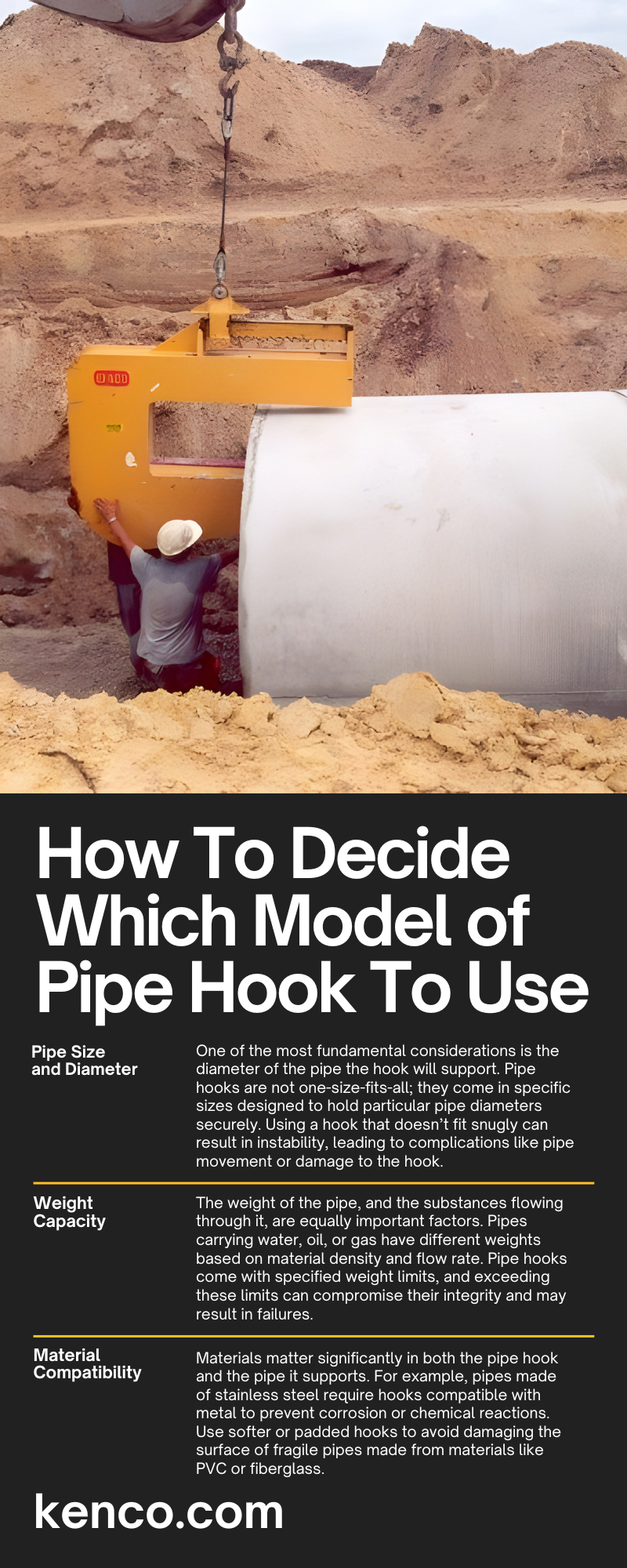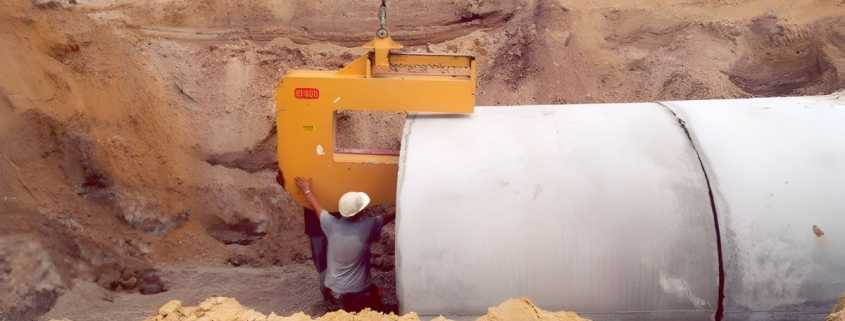How To Decide Which Model of Pipe Hook To Use
When constructing piping systems in any environment, whether residential, industrial, or commercial, pipe hooks play an important role. They securely hold pipes in place, maintain system integrity, and prevent damage caused by movement, vibrations, or external forces. However, selecting the right model of pipe hook for your project isn’t just about picking the first one that fits. You must consider a variety of factors to ensure safety, durability, and efficiency.
This guide will walk you through how to decide which model of pipe hook to use. By the end, you’ll have the knowledge you need to select the optimal solution for your piping system.
Factors To Consider Before Choosing a Pipe Hook
Before exploring the various types of pipe hooks available, it’s essential to understand the key factors that influence your choice. These aspects vary depending on the size, weight, and use of your piping system.
Pipe Size and Diameter
One of the most fundamental considerations is the diameter of the pipe the hook will support. Pipe hooks are not one-size-fits-all; they come in specific sizes designed to hold particular pipe diameters securely. Using a hook that doesn’t fit snugly can result in instability, leading to complications like pipe movement or damage to the hook.
Measuring your pipe diameter accurately is crucial. Always match the pipe hook to your intended pipe size to minimize play and undesired movement.
Weight Capacity
The weight of the pipe, and the substances flowing through it, are equally important factors. Pipes carrying water, oil, or gas have different weights based on material density and flow rate. Pipe hooks come with specified weight limits, and exceeding these limits can compromise their integrity and may result in failures.
Calculate the weight your pipe hook will need to carry and verify that the hook’s weight capacity exceeds that figure. This ensures a level of safety and durability that helps you avoid mishaps.
Material Compatibility
Materials matter significantly in both the pipe hook and the pipe it supports. For example, pipes made of stainless steel require hooks compatible with metal to prevent corrosion or chemical reactions. Use softer or padded hooks to avoid damaging the surface of fragile pipes made from materials like PVC or fiberglass.
Additionally, certain materials are better suited for specific industries. For example, in food-grade or pharmaceutical environments, stainless steel pipe hooks may be preferable due to their corrosion resistance and hygienic properties.
Environmental Conditions
Your operating environment heavily influences the type of pipe hook you should use. For piping systems located outdoors, hooks resistant to extreme weather conditions, such as galvanized or powder-coated options, are ideal. Indoor environments might require less heavy-duty solutions but may need materials resistant to chemicals or heat depending on your industry.
Temperature, moisture levels, and exposure to chemicals should all factor into your decision, as these conditions can degrade certain materials over time and affect the reliability of the pipe hook.
Types of Pipe Hooks and Their Applications
Understanding the various types of pipe hooks available will help you further refine your decision. Specific applications determine the design of hooks, which offer unique benefits for your piping system.
J-Hooks
One of the most commonly used pipe hooks is the J-hook, named for its curved “J” shape. This type of hook is ideal for providing stable, rounded support for cables or lighter pipes. Its open design allows for easy installation while still maintaining a firm grip on the pipe.
These hooks shine in light to medium-duty applications, making them ideal for smaller residential or commercial systems like water pipes or low-voltage cabling. The 360-degree support reduces wear on the pipe, maintaining both safety and longevity.
Clevis Hangers
For heavier piping systems, clevis hangers are a popular choice. These offer robust support and are particularly well-suited for industrial or commercial systems where weight and stability are key considerations. Clevis hangers consist of a U-shaped frame paired with adjustable hardware, allowing for precise alignment and secure fastening of pipes.
Their design also accommodates vertical adjustment and slight movement, making them ideal for pipelines that expand and contract due to thermal changes.
U-Bolts
U-bolts, as the name suggests, feature a U-shaped design and work by securing the pipe to a fixed surface, such as a wall or beam. Industrial applications commonly use these incredibly versatile hooks to keep piping systems rigidly in place.
The simplicity and stability of U-bolts make them a go-to choice for both lightweight and heavy-duty pipes. They are especially effective in outdoor applications due to their ability to anchor pipes firmly regardless of environmental conditions.
Pipe Clamps
Pipe clamps are adjustable hooks that encircle the pipe entirely for maximum grasp. Their flexibility makes them suitable for various pipe sizes without the need for additional hooks. Pipe clamps come in many materials, from steel to plastic, offering options for a wide range of applications.
These hooks are great for pipes requiring controlled vibration or sound dampening, serving as an excellent solution in residential HVAC systems or lightweight plumbing.
Installation Tips for Safety and Performance
Choosing the right pipe hook is just one piece of the puzzle. Proper installation is crucial to ensure safety and optimal functionality for your piping system.
Measure and Align Carefully
Start by making sure you have accurate measurements of your pipe’s dimensions and position. Use these measurements to determine the precise location to mount the hook. Remember, improper alignment can lead to unwanted stress on your piping system.
Use Appropriate Hardware
The screws, bolts, or anchors you use to install pipe hooks must match the installation environment. For example, heavy-duty anchors are necessary when mounting industrial-grade hooks into concrete walls, whereas lighter-grade fasteners can suffice for residential applications.
Account for Pipe Movement
Depending on the type of piping system, some degree of movement is inevitable due to expansion, contraction, or vibration. Choose hooks that allow for slight movement in these situations. For example, clevis hangers with vertical adjustments can safely absorb these shifts without compromising the integrity of the piping system.
Perform Regular Inspections
After installation, pipes and their respective hooks require routine maintenance and inspections to ensure continued performance. Look for signs of corrosion, wear, or misalignment and promptly replace any damaged components.
Choosing the Right Pipe Hook Brings Long-Term Benefits
From verifying stability to preventing long-term issues like corrosion and wear, knowing how to decide which model of pipe hook to use maintains the integrity of your piping systems. By evaluating critical factors such as pipe size, weight, materials, and environmental considerations, along with understanding the unique applications of each pipe hook type, you can make an informed choice.
Kenco Corporation offers a variety of high-quality pipe hooks, including concrete pipe hooks, to ensure you have the best lifting attachment for the job. With our efficient pipe handling attachments and the right installation techniques, your piping system will function reliably and safely for years to come. Contact us today to learn more.





Leave a Reply
Want to join the discussion?Feel free to contribute!